When a brand-name drug loses its patent, the first company to get FDA approval for a generic version doesn’t just get to sell a cheaper pill-they get a legal monopoly for 180 days. That’s not luck. It’s the result of a decades-old law designed to break drug monopolies and slash prices. If you’ve ever paid less for your blood pressure medicine or diabetes pills because a generic appeared on the shelf, you’ve felt the impact of a first generic approval.
What Exactly Is a First Generic Approval?
A first generic approval is when the FDA gives the green light to the very first company to submit a complete application to sell a generic version of a brand-name drug after its patent expires. This isn’t just any generic. It’s the first one in, and it comes with a powerful reward: 180 days of exclusive sales rights. During that time, no other generic can legally enter the market. That’s why you’ll often see one company’s version of a drug dominate pharmacy shelves for half a year-because they’re the only one allowed.
This system was created by the Hatch-Waxman Act of 1984. Before then, generic drug makers had to repeat all the expensive clinical trials that the original drug company did. That made generics too costly to bother with. Hatch-Waxman changed that. It said: if you can prove your pill works the same way as the brand-name drug, you don’t need to redo the trials. You just need to show bioequivalence-meaning your version gets absorbed into the body at nearly the same rate and amount. The FDA found that, on average, generic drugs differ from brand-name versions by just 3.5% in absorption. That’s less than the variation between two batches of the same brand-name drug.
How the 180-Day Exclusivity Works
The 180-day clock doesn’t start when the FDA approves the drug. It starts when the company actually sells it. And there’s a catch: to get this exclusivity, the generic company must file what’s called a Paragraph IV certification. That’s a legal notice saying, “We believe your patent is invalid or we don’t infringe it.” That triggers a lawsuit from the brand-name company. If the brand sues, the FDA can’t approve the generic for up to 30 months while the court case plays out. But if the generic wins-or if the brand backs down-the exclusivity kicks in.
Why does this matter? Because the first generic can price itself 15-20% below the brand-name drug and still make huge profits. For a blockbuster drug like Humira, which sold over $20 billion a year, the first generic maker could clear $300-500 million in those 180 days. That’s why companies like Teva and Hikma spend millions on legal teams and years preparing their applications. They’re not just making medicine-they’re betting on a financial jackpot.
Why First Generics Save You Money
Once that 180-day window opens, other generics flood in. And prices drop fast. Within six months of the first generic launch, the price of the drug typically falls 70-90%. Compare that to when multiple generics enter later: prices only drop 30-40%. That’s the real power of being first. The initial competitor breaks the dam. The rest just pour through.
Since 1984, generic drugs have saved the U.S. healthcare system more than $1.7 trillion. And first generics are the biggest drivers of those savings. In 2023 alone, the FDA approved 112 first generics. Those drugs accounted for $18.5 billion in sales-16% of the entire $112.7 billion generic market. That’s not just corporate profit. That’s lower co-pays for you, lower costs for Medicare and Medicaid, and fewer people skipping doses because they can’t afford their meds.
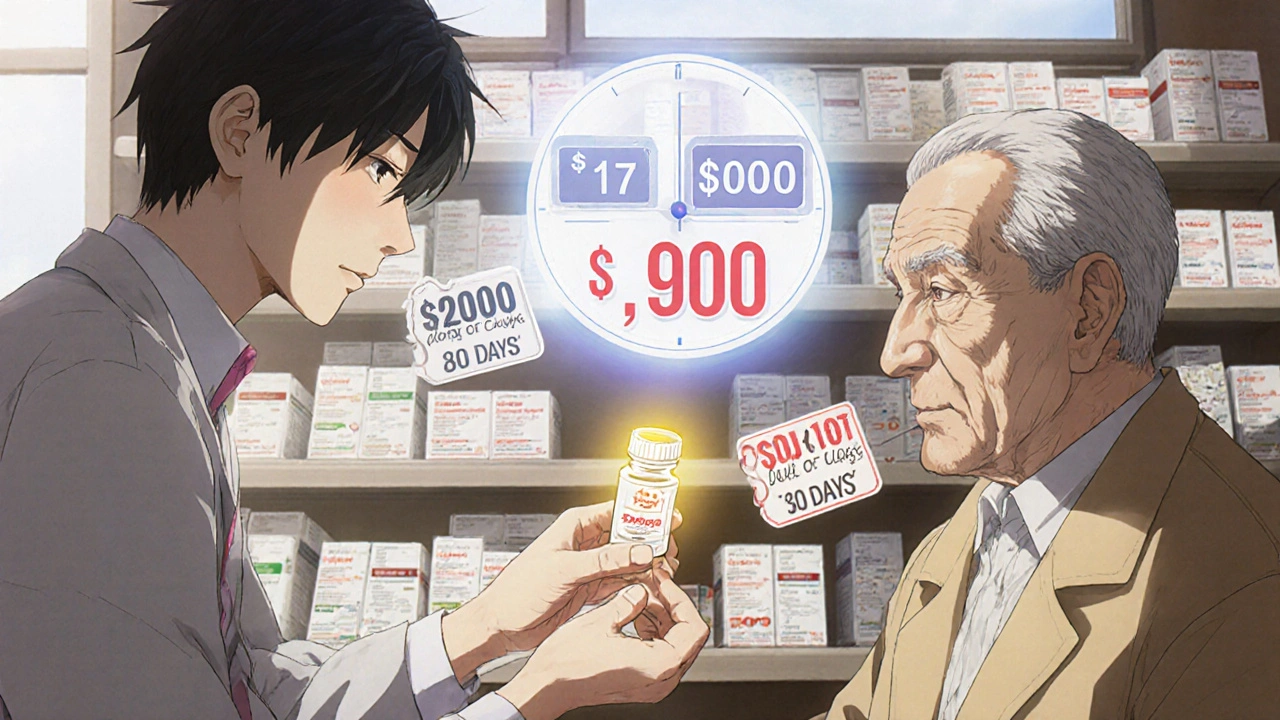
It’s Not Always Smooth Sailing
Getting that first approval isn’t easy. Companies face massive hurdles. First, there’s the patent maze. The average brand-name drug has over seven patents protecting it-some for the pill itself, others for how it’s made, how it’s packaged, even how it’s taken. Navigating that takes legal teams and millions in fees. Many first generic applicants spend $5-15 million just on lawsuits.
Then there’s the risk of “authorized generics.” That’s when the brand-name company sells its own drug under a different label-no logo, no marketing, same pill. They do this to undercut the first generic before it even launches. Studies show authorized generics can steal 20-30% of the first generic’s market share. It’s legal, and it’s common. Between 2015 and 2022, this happened in 38% of first generic cases.
And sometimes, multiple companies file on the same day. The FDA calls this “multiple first filers.” If that happens, they split the 180-day exclusivity. That means no one gets the full advantage. That’s why companies race to be the very first to hit “submit” on their ANDA application.
Real-World Impact: Patients and Pharmacists
For patients, first generics mean immediate access to affordable drugs. A 2024 survey of 1,200 pharmacists found that 87% said first generics improved patient access. Seventy-three percent reported better medication adherence after patients switched. On Drugs.com, first generics have an average rating of 4.2 out of 5-almost identical to the brand-name drugs.
But it’s not perfect. Pharmacists also report supply chain hiccups. When the first generic launches, demand can spike unexpectedly. If the manufacturer can’t scale up production fast enough, shortages happen. In 2023, the first generic for Eliquis (apixaban) faced a 90-day delay due to manufacturing issues. Prices stayed high. Patients waited. That’s why the FDA now requires companies to prove they can produce enough supply before approval.
Take Humira’s first generic, launched by Amgen in September 2023. Within 90 days, it captured 42% of the market. Patients reported no difference in side effects or effectiveness. The brand-name version dropped from $7,000 per month to under $1,000. That’s not just a corporate win. That’s a life-changing price drop for someone with rheumatoid arthritis or Crohn’s disease.
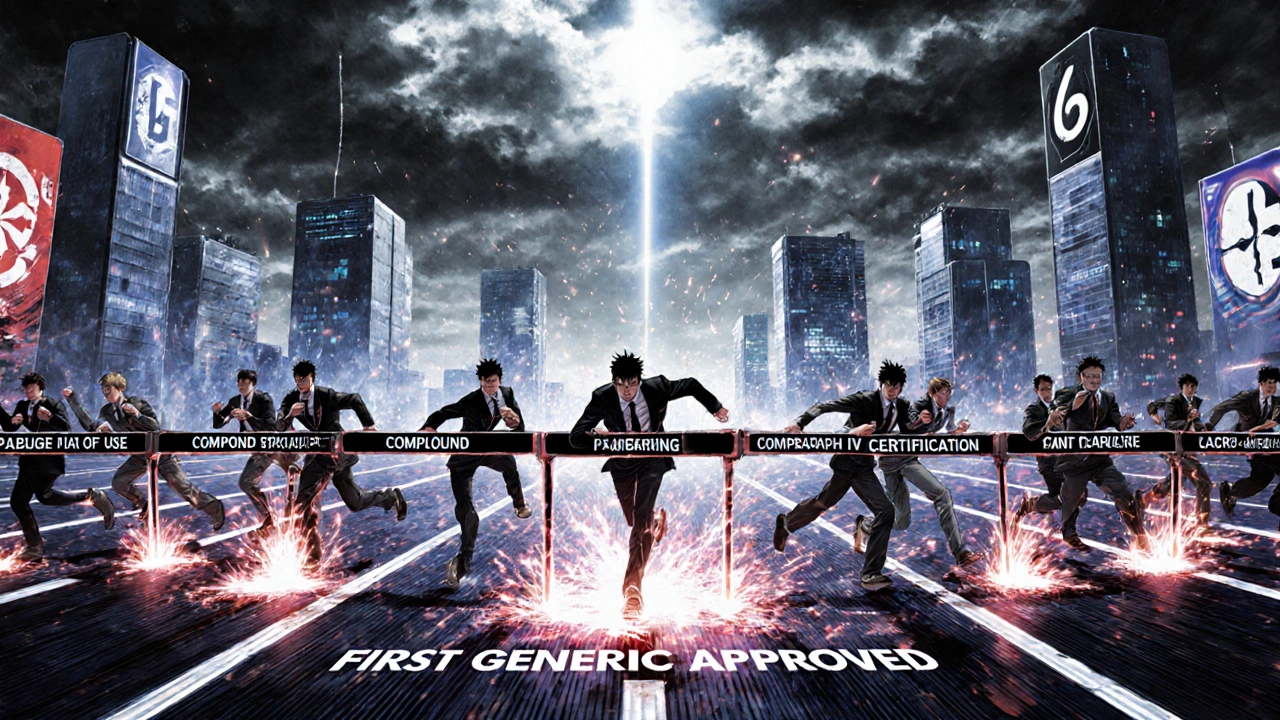
What’s Changing Now?
The landscape is shifting. The FDA is now pushing harder to approve first generics for complex drugs-things like inhalers, injectables, and topical creams that are harder to copy. In 2023, 17 complex generics got first approval, up from just 9 in 2022. The 2022 Inflation Reduction Act also removed a loophole that let brand-name companies pause the 180-day clock by using special safety programs called REMS. That means faster access now.
But new threats are emerging. Biologics-drugs made from living cells, like insulin or cancer treatments-are the next frontier. The first biosimilars (the generic version of biologics) have only had 43 approvals since 2010, mostly because they’re scientifically harder to replicate. The FDA is working on new rules to speed this up.
And the clock is ticking on patents. Over $156 billion worth of brand-name drugs are set to lose patent protection by 2028. That means a wave of first generic approvals is coming. The companies that win those races will shape the future of drug pricing in America.
Why This Matters to You
You don’t need to understand ANDA submissions or Paragraph IV certifications to benefit from first generic approval. But you should know this: the reason your prescriptions are cheaper today isn’t because drug companies got kinder. It’s because the system was built to force competition. The first generic is the spark. Everything else follows.
If you’re on a brand-name drug that’s about to go generic, watch for the first version. It’s often the cheapest you’ll ever see it. And if it’s delayed? That’s not a supply issue-it’s probably a patent fight. That’s the system working as intended. Sometimes, the slowest path is the one that saves you the most money.
What does ‘first generic approval’ mean?
First generic approval means the FDA has approved the first company to submit a complete application to sell a generic version of a brand-name drug after its patent expires. This company gets 180 days of exclusive rights to sell that generic, with no competition from other generics during that time.
Why does the first generic get 180 days of exclusivity?
The 180-day exclusivity is a reward for taking on the legal and financial risk of challenging a brand-name drug’s patents. To qualify, the generic company must file a Paragraph IV certification, which often leads to expensive lawsuits. The exclusivity gives them a chance to recoup those costs and make a profit before other generics enter the market.
Are first generics as safe and effective as brand-name drugs?
Yes. The FDA requires all generics, including first generics, to be bioequivalent to the brand-name drug. That means they deliver the same amount of active ingredient into the bloodstream at the same rate. Studies show the average difference in absorption is just 3.5%, which is less than the variation between two batches of the same brand-name drug.
Can the brand-name company sell its own generic version?
Yes. This is called an “authorized generic.” The brand-name company can sell its own drug under a different label, without branding, and often at a lower price. This can happen during the first generic’s exclusivity period and can reduce the first generic’s market share by 20-30%.
Why do some first generics take longer to appear on shelves?
Delays often happen because of patent lawsuits. If the brand-name company sues, the FDA can delay approval for up to 30 months. Manufacturing issues, facility inspections, or supply chain problems can also cause delays. In some cases, multiple companies file at the same time, which can complicate exclusivity rules.
How do first generics affect drug prices long-term?
First generics trigger the biggest price drops. Within six months of their launch, prices typically fall 70-90%. After other generics enter, prices drop further but much more slowly-usually only 30-40% more. That’s why the first one is the most important for lowering costs.
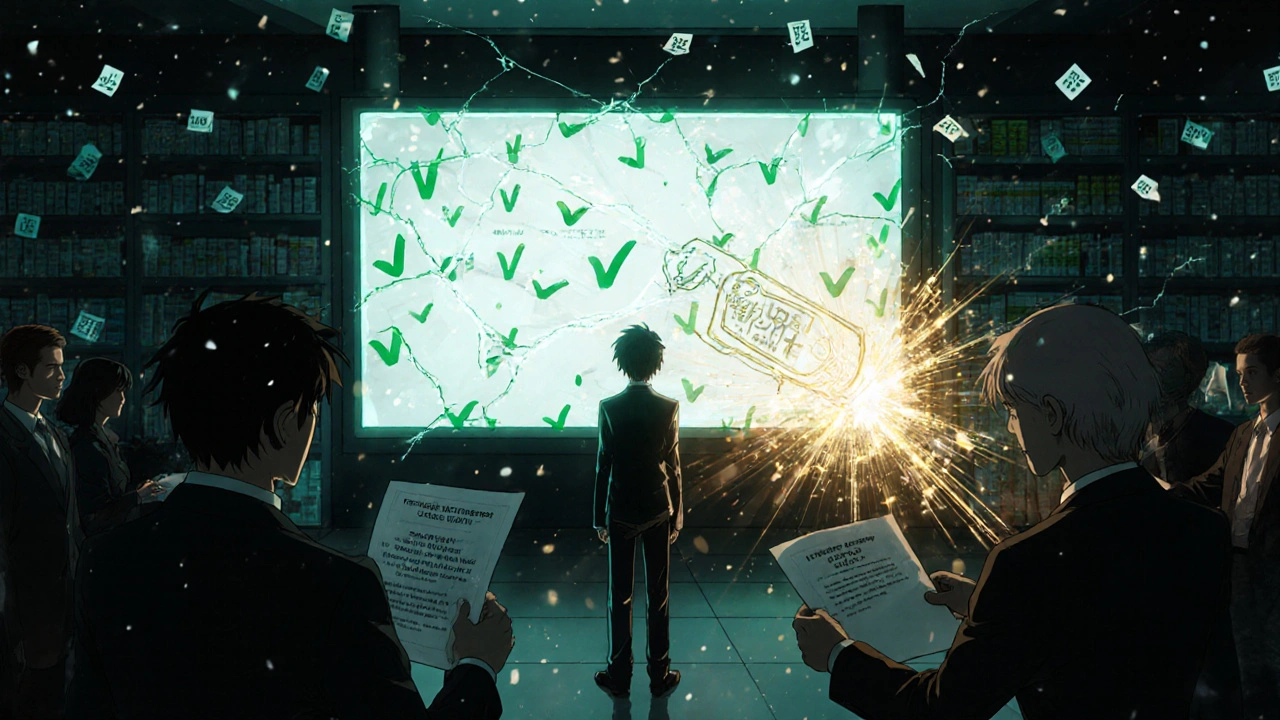
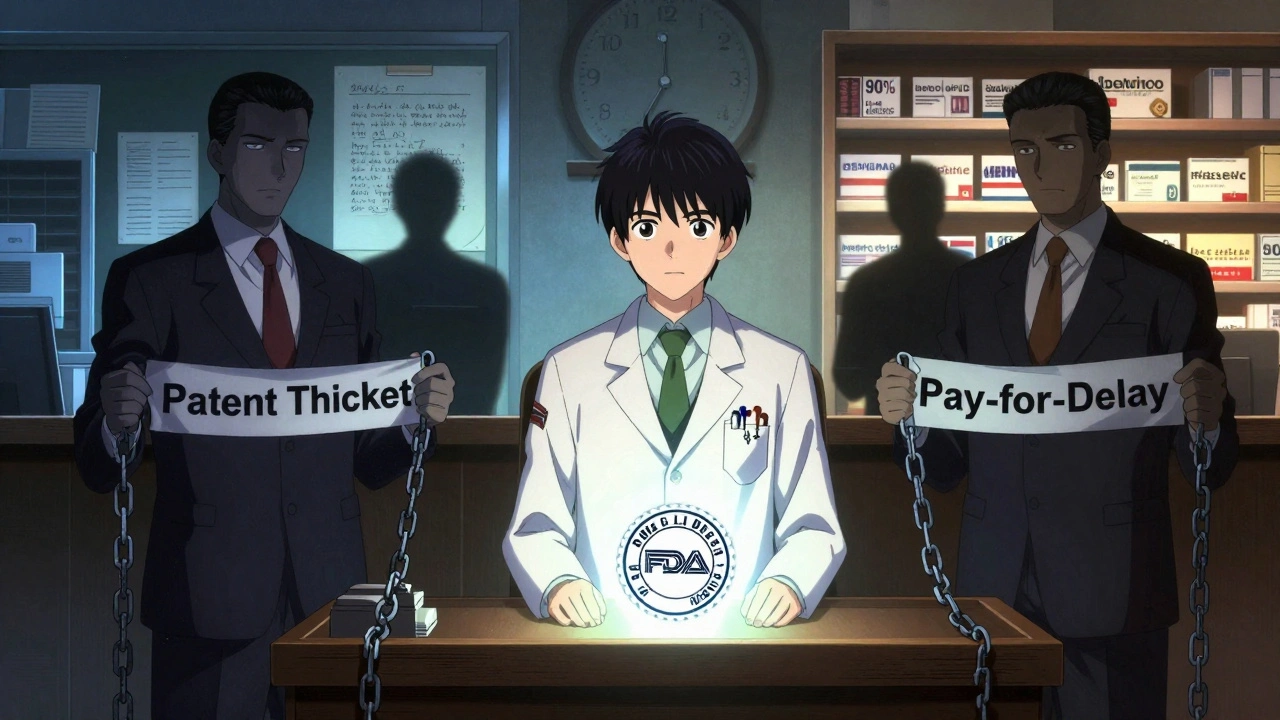
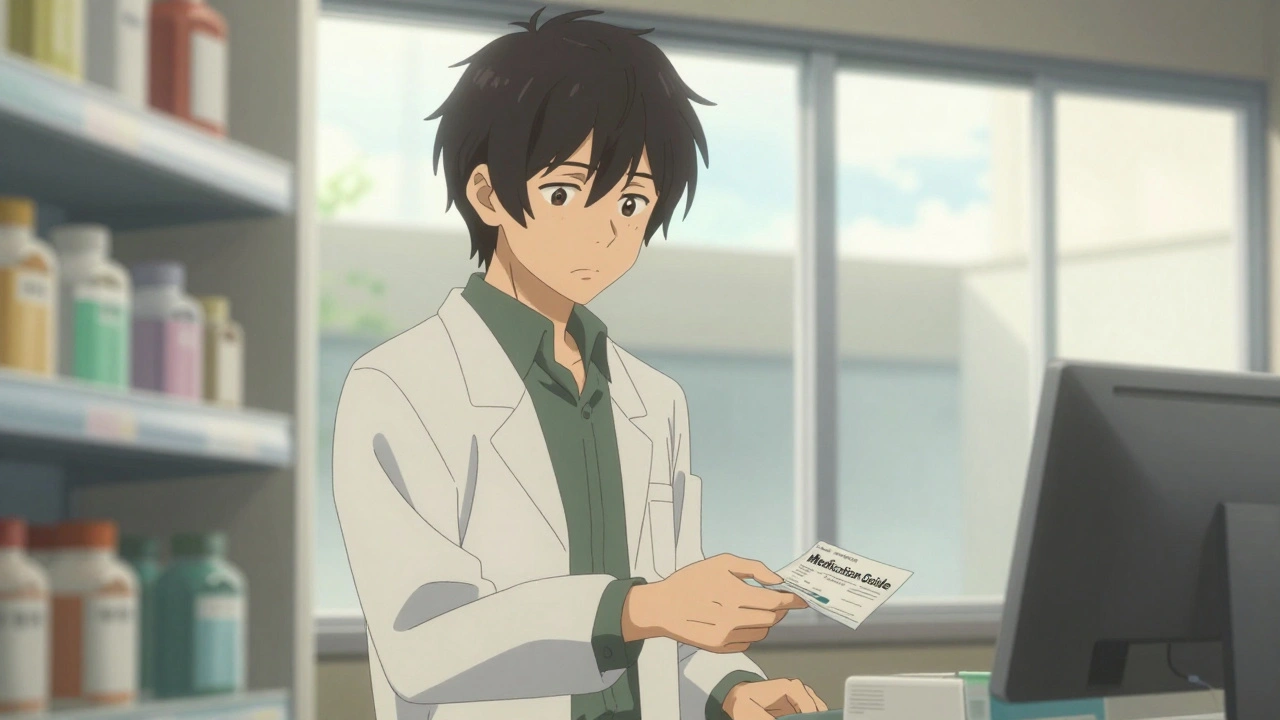

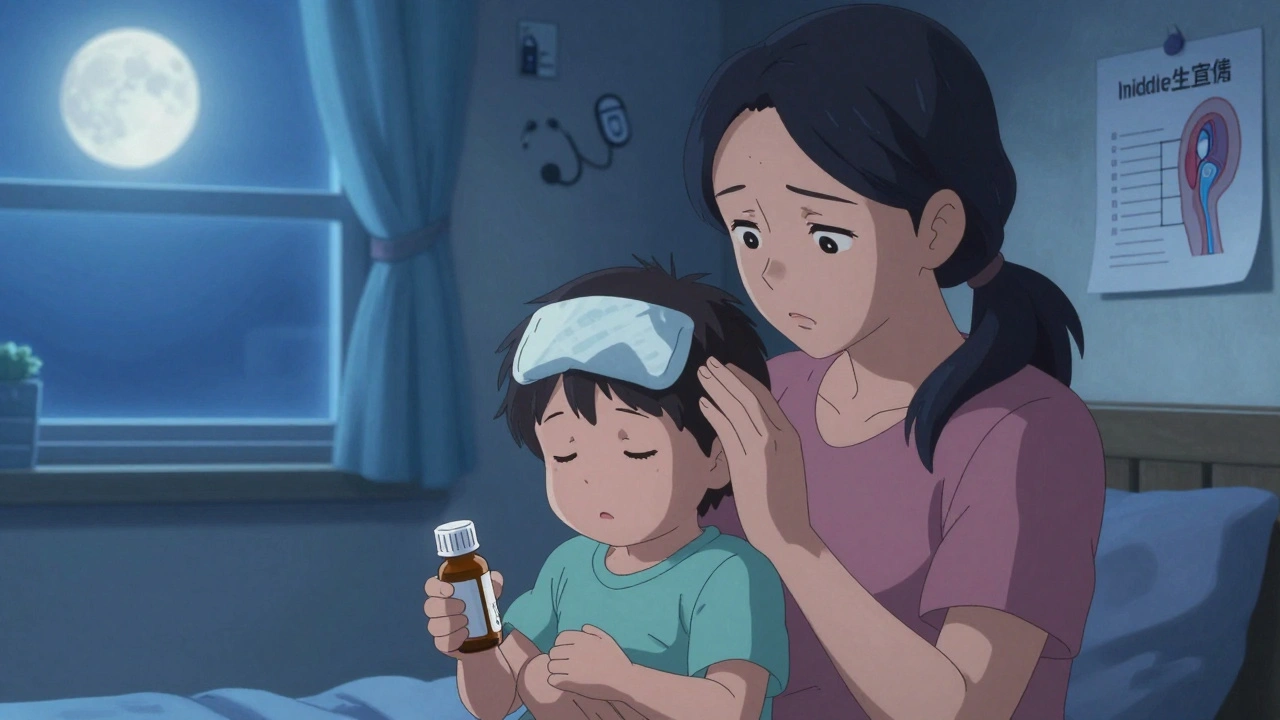
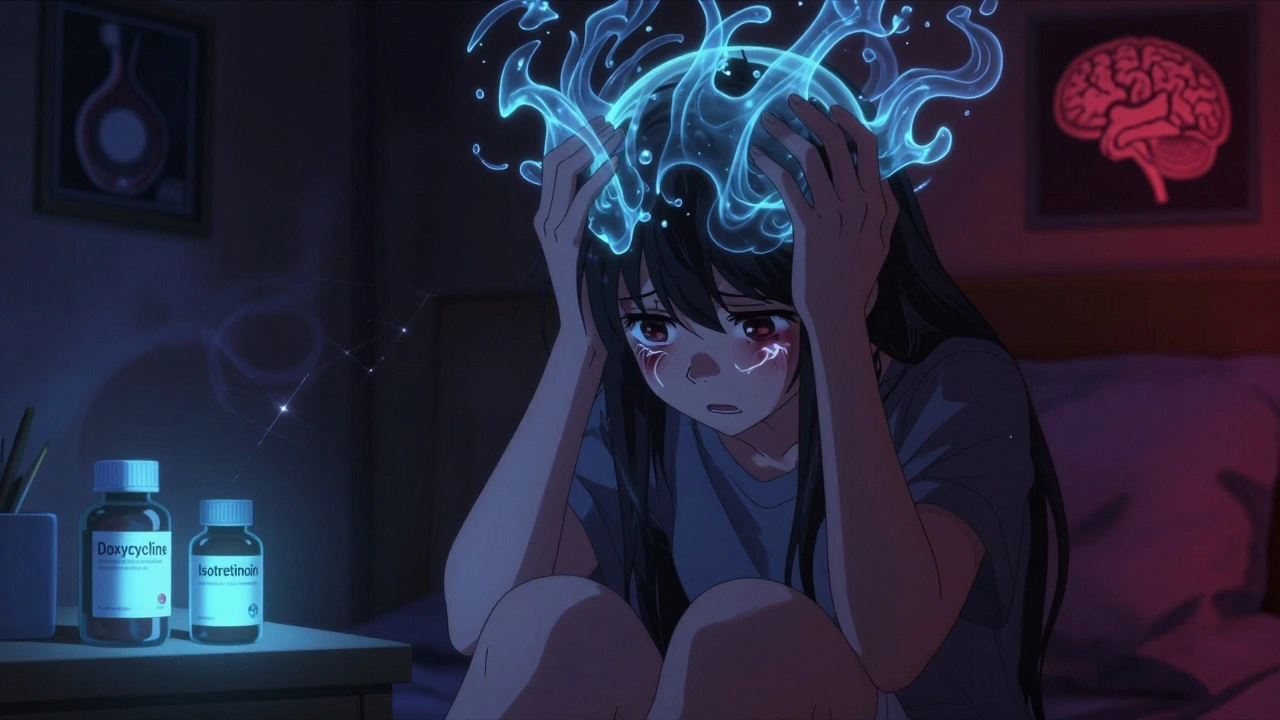
Srikanth BH
November 24, 2025 AT 16:22This is such a crucial topic that rarely gets talked about outside of healthcare circles. I’ve seen my dad switch from Humira to the generic and his co-pay dropped from $800 to $45. That’s life-changing. People don’t realize how much of a fight goes into getting these drugs approved - it’s not just about chemistry, it’s about lawyers, patents, and corporate chess.
Jennifer Griffith
November 25, 2025 AT 22:13so like… the first generic gets to charge like 20% less and then everyone else comes in and its like 80% off?? sounds sus. why dont they just make it cheap from the start??
Roscoe Howard
November 25, 2025 AT 23:35It is imperative to recognize that the Hatch-Waxman Act, enacted in 1984, constitutes a seminal legislative framework that incentivizes market competition through legally sanctioned monopolistic windows. The notion that a private entity may profit from a 180-day exclusivity period is not a market distortion - it is a deliberate economic mechanism designed to overcome the high fixed costs of litigation and regulatory compliance. To question this structure is to misunderstand the foundational architecture of pharmaceutical innovation in the United States.
Patricia McElhinney
November 26, 2025 AT 22:20Ugh. Another ‘generic good, brand bad’ narrative. You people ignore that brand-name companies invest billions in R&D. Without patents, there’d be NO drugs at all. And now you’re rewarding lawyers who just wait for patents to expire and then sue? That’s not innovation - that’s legal arbitrage. Also, ‘bioequivalent’? My cousin took a generic for thyroid and went into atrial fibrillation. So much for ‘3.5% difference’.
Agastya Shukla
November 28, 2025 AT 00:07From a regulatory perspective, the Paragraph IV certification mechanism introduces a suboptimal equilibrium in the patent litigation space. The strategic filing of ANDAs by multiple entities, coupled with the potential for authorized generics, creates a rent-seeking environment that undermines the intended efficiency gains of the Hatch-Waxman framework. The FDA’s recent push for pre-approval manufacturing scalability assessments represents a necessary, albeit incremental, corrective intervention.
Pallab Dasgupta
November 29, 2025 AT 03:37Bro. I just want to say - this whole system is wild. Imagine betting $10 million on a lawsuit just to sell a pill cheaper. And then the brand just turns around and sells the SAME PILL under a different name?? That’s like a magician pulling the same rabbit out of two hats. I’m not mad, I’m just impressed. Also, if you’re on a drug that’s about to go generic? Watch the clock. The first one’s always the cheapest. And if it’s late? That’s not a delay - that’s a patent fight. That’s the system working. It’s not broken - it’s just brutal.
Ellen Sales
November 29, 2025 AT 19:42It’s funny… we talk about ‘saving money’ like it’s some kind of moral victory… but behind every cheap pill is a company that spent millions fighting in court… and sometimes… the person who needs the medicine the most… still can’t get it because the factory is backed up… or the insurance won’t cover the new label… and no one talks about that…
Emily Craig
December 1, 2025 AT 18:37Oh so now the ‘first generic’ is the hero? Cool. So the guy who spent $12 million on lawyers gets to charge $500 for a pill that costs $2 to make… and we’re supposed to cheer? Meanwhile, my mom’s insulin is still $400 a vial because it’s a ‘biologic’ and no one can copy it… because science is hard… and capitalism is lazy. Thanks for the ‘win’.
Karen Willie
December 3, 2025 AT 03:28I appreciate the breakdown - really do. But I keep thinking about the people who don’t even know this system exists. They just see a price drop and think, ‘Oh, the drug company must’ve lowered it.’ No one tells them it’s because someone fought a legal war for them. We need more stories like this - not just for policy folks, but for the folks who just need to breathe easier because their co-pay isn’t eating their rent.